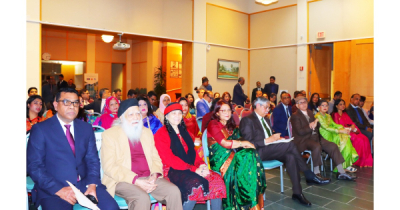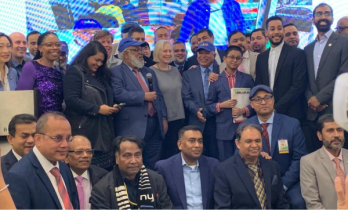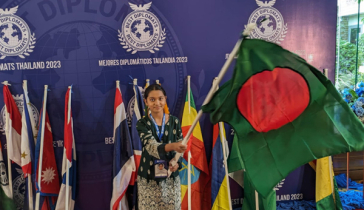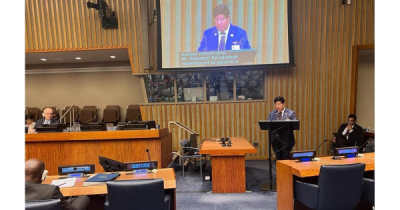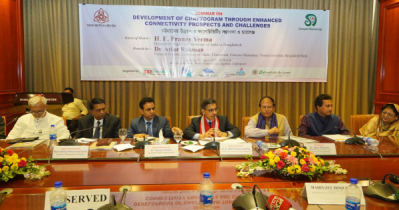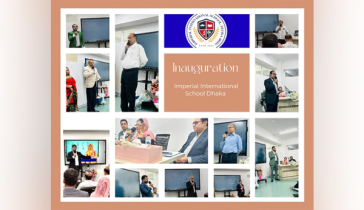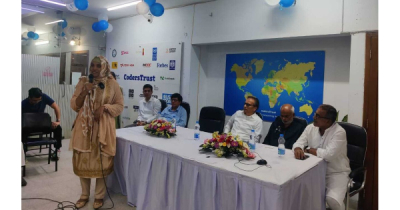Evidence-based national policies essential to curb local COVID-19 infections
Evidence-based national policies essential to curb local COVID-19 infections
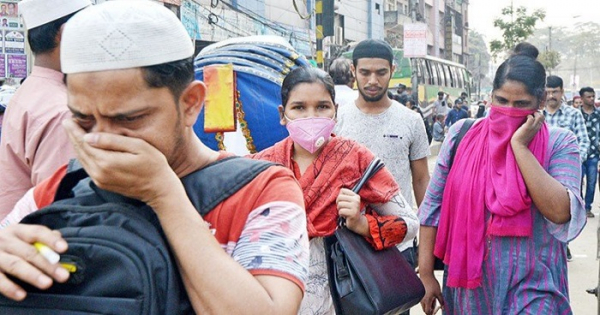 |
Recently, a genomic epidemiology consortium comprised of the Institute of Epidemiology, Disease Control and Research (IEDCR), Bangladesh; icddr,b (formerly International Centre for Diarrhoeal Disease Research, Bangladesh) and Institute for Developing Science and Health Initiatives (ideSHi) in collaboration with local and international institutions have published a scientific paper in Nature Microbiology titled “Genomics, social media, and mobile phone data enable mapping of SARS-CoV-2 lineages to inform health policy in Bangladesh.”
The article's authors have analysed genome sequencing data of 391 SARS-CoV-2 samples collected in Bangladesh between March-July 2020 and conducted phylogenetic analysis of the evolutionary relationship between SARS-CoV-2 lineages that emerged at different times and locations in Bangladesh during the first wave in Bangladesh. Additionally, anonymised population mobility data collected from Facebook and three mobile operators were integrated with the genomic data to investigate the spatial spread of the virus in Bangladesh. Of the 391 samples analysed from the first wave, complete genomes of 67 samples were sequenced by the consortium between March – July 2020, and the rest were collected from GISAID, which other institutions sequenced. The analysis revealed that of the 391 sequences, 85% isolates fell into three dominant lineages, namely lineages B.1.1, B.1.1.25, and B.1.36. Lineage B.1.1 accounted for 19 percent of sequences, while B.1.1.25 accounted for 58 percent of sequences. Lineage B.1.36 accounted for 8 percent of the sequences and was predominant in southern Bangladesh with 64 percent of isolates found in Chattogram division.
To investigate the factors that led to country-wide spread of these three dominant lineages seen at that time, the consortium examined the history of events that unfolded before the first wave of COVID-19. Bangladesh reported the first COVID-19 case on 8 March 2020. To contain the spread of the virus, the Government of Bangladesh announced a national public holiday with stay-at-home order on 23 March 2020, which was effective from 26 March to 4 April and later incrementally extended until 30 May 2020. However, the population mobility data collected from Facebook and three mobile phone operators showed an important link between population movement and the spread of SARS-CoV-2. It indicated a mass migration out of Dhaka to all areas of the country on 23-26 March 2020. Together, these mobility data are consistent with the transmission of SARS-CoV-2 out of Dhaka to the rest of the country during the first wave. Combining population mobility and genomics data revealed a direct link between the transmission of three dominant lineages and the spread of the disease across the country during the first wave.
Later on, the consortium sequenced another 85 SARS-CoV-2 specimens in April 2021 collected between November 2020 and April 2021. Of these, 30 were lineage B.1.1.25 (35%), 13 were variant of concern Alpha (B.1.1.7, 15%), 40 were variant of concern Beta (B.1.351, 47%), 1 was lineage B.1.1.315, and 1 was lineage B.1.525. Their analysis of the first wave and the revealed country-wide spread through inter-city travel led the authors to work directly with the government on the detection of variants of concern Alpha and Beta in Bangladesh. The government of Bangladesh responded accordingly and implemented interventions that would limit spread of the virus through the same channels as observed during the first wave (e.g. restrictions on inter-city travel).
Commenting on the outcome of the study, Professor Dr. Tahmina Shirin, Director of IEDCR, Ministry of Health and Family welfare (MoHFW) and a senior author of the article, said, “Our consortium has provided many invaluable insights that helped the decision-makers to devise essential real-time policy decisions. These include the provision of mandatory quarantine and isolation of travellers arriving from countries where the variant of concern was dominating, imposing lockdown measures and restricting inter-city movements of people, banning all international flights from high-risk countries to Bangladesh.”
“It is important that we continue to generate evidence to aid our policymakers to contain the spread of the virus successfully.” – she added.
Dr Lauren A. Cowley, University of Bath, UK and one of the first authors of the article said, “It was a privilege to be involved in such a pioneering genomic epidemiology study led by Bangladesh. By combining different data streams from genomic and mobility data, we were able to provide new resolution to how SARS-CoV-2 spread in Bangladesh. This study showcases the incredible capacity for genome sequencing that has been built in Bangladesh that will continue to be used during the ongoing COVID-19 pandemic but also in future outbreaks of other pathogens.”
Professor Nicholas Robert Thomson, Wellcome Sanger Institute, UK commented on the collaborative work behind the study. He said, “Our teams have worked together productively for many years studying many different infectious diseases. We have shared expertise, experiences, students and training. This study was built on those shared experiences and a lot of hard work. It is a great example of what can be achieved when scientists work collectively with public health professionals towards a collective goal.”
Professor Caroline Buckee, Harvard TH Chan School of Public Health, USA, commented on the integration of genomic data along with people’s movement data. She said, “These new data streams are valuable additions to traditional surveillance systems, and this study shows how they can be used during an emerging crisis to provide insights that are difficult to gain any other way. It also highlights the potential for interdisciplinary approaches like this to transform public health during this pandemic and in the future.”
Dr Firdausi Qadri, Senior Scientist at icddr,b and a senior author of the article, commented about the emergence of new variants and associated risk. She said, “As more mutations accumulate in the SARS-CoV-2’s genetic code, there would be more variants of which some could have the strength to breakthrough natural or vaccine-induced immunity. This is already becoming evident and Bangladesh has experienced the second wave with the Beta variant and is currently battling the third wave with the Delta variant. Real-time genomic surveillance is critical to understand the efficacy of these vaccines and protection from previous Covid-19 infections and to devise relevant strategies for Bangladesh and beyond.”
The consortium has been supported by the Directorate General of Health Services (DGHS), Bangladesh; the Aspire to Innovate (a2i) Program, Bangladesh; University of Bath, UK; Wellcome Sanger Institute, UK; Harvard TH Chan School of Public Health, USA.
Facebook Data for Good, Grameenphone, Banglalink, Robi Axiata Limited provided population movement data.
The Bill and Melinda Gates Foundation and the Government of Bangladesh supported the in-country sequencing of SARS-CoV-2 Bangladesh samples.

আরও পড়ুন
- Harvard professor to join McWeadon-Faith Bangladesh Webinar on e-learning
- Bangladeshi-American to be first South Asian Lt Commander in NYPD
- Maria Howlader made new Chair of SAFA Women Leadership Committee
- Intl Girls in ICT Day
Virtual roundtable on Accelerating Digital Inclusion for Girls held - JMI brings first Bangladeshi-branded KN95 masks
- C-BED Programme Launched in Bangladesh
- Professor Zahir receives `Most Outstanding Professor’ Award
- Foreign ministry issues 8-pnt statement over Rohingya relocation
- Symphony launches new Smartphone Symphony Z30 Pro
- Vitol’s trades cause LNG prices soaring, BD affected


